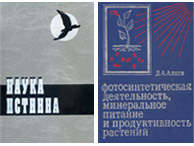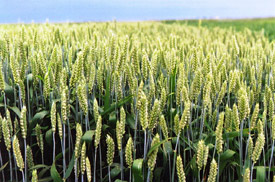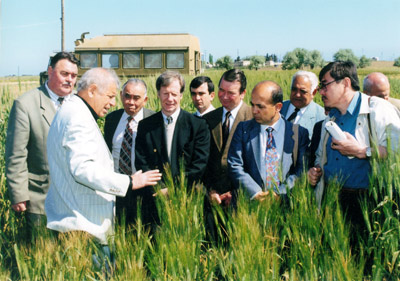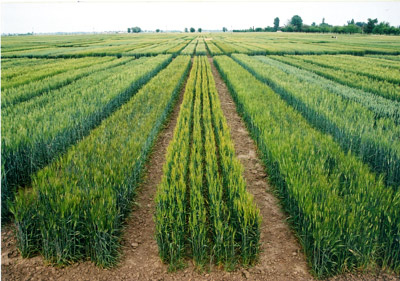
Last news
[20.06.2008]НАУЧНЫЙ РУКОВОДИТЕЛЬ И КОНСУЛЬТАНТ ДИССЕРТАНТОВ
[20.06.2008]НАУКА
ИСТИННА
[20.06.2008]Awards
[20.06.2008]Brief essay on scientific activity of Professor JALAL ALIYEV
[17.06.2008]Список книг Д.А.Алиева
Announcements
20.06.2008
On June 27, 2008 the talk of famous Japanese scientist in the field of photosynthesis, Professor Murata N. will be held in the Institute of Botany.
20.06.2008
On June 25, Tarlan Mammadov Hazarpasha oglu will defend his dissertation entitled "Identification, characterization and ... →
20.06.2008
The International Conference and Workshop on "Bioinformatics: Current Progress and Practical Applications" devoted to the 80th anniversary of J. Aliyev... →
Scientific achivements

НАУКА ИСТИННА
20.06.2008
(Документальная хроника)
В тяжелое для страны время политических игр трудный путь борьбы академика Джалала Алиева во имя принципов чистоты науки и торжества истины →
13.06.2008
ORIGIN: The variety was released at Research Institute of Agriculture crossing local "Garagylchyk" cultivar with "Norin-10" by a multistage selection. →
7.06.2008
Д.А.Алиев. Влияние микроэлементов на некоторые физиологические процессы и урожайность озимой пшеницы. →
News
Key Regulator Of DNA Mutations Identified
ScienceDaily (Jun. 12, 2008) - As a general rule, your DNA is not something you want rearranged. But there are exceptions - especially when it comes to fighting infections. Since the number of microbes in the world far surpasses the amount of human DNA dedicated to combat them, specialized cells in the immune system have adopted an ingenious, if potentially disastrous, strategy for making antibodies. These cells, called B lymphocytes, intentionally mutate their own DNA to ward off invaders they have never seen before.Now, Rockefeller University scientists F. Nina Papavasiliou and Michel C. Nussenzweig have independently identified a tiny molecule that directly binds to and curbs the production of this potent gene mutator, an enzyme called AID. By tightly controlling levels of AID, this molecule, known as microRNA-155, stands between two opposing bastions of health: an immune system that can ward off an ever-growing legion of infectious microbes and one that can send the body down the road to some of the most aggressive and lethal forms of cancer - leukemia and B cell lymphomas.
The findings of both papers, reported back-to-back in the May 16 issue of Immunity, define a new role for miR-155. In the past, it has been implicated in the onset and development of cancer. Now, this research suggests that when it specifically binds to AID, it can potentially thwart it. "We used a different approach and different tools, yet we said the same things and reached the same conclusions," says Papavasiliou, head of the Laboratory of Lymphocyte Biology. "It's pretty powerful stuff."
In B lymphocytes, AID specifically targets a small strip of DNA that encodes an antibody molecule. When AID mutates this DNA segment even slightly the altered gene can either give rise to an antibody that binds to a different invader or one that clings tighter to its original target, maximizing the chance that it will be effective. By regulating how much AID is present in these cells, miR-155 helps ensure that there is just enough AID to only mutate this strip of DNA.
But there's a catch, explains Grace Teng, a graduate student in the Papavasiliou lab. She found that while too little AID impairs the immune system's ability to fight infections, too much AID produces neither a more diverse nor a more effective repertoire of antibodies to keep invaders at bay. Instead, excess levels of the enzyme cause pieces of the antibody genes to swap places with other genes on different chromosomes. This process, called translocation, doesn't always lead to cancer, but it is a hallmark of the disease.
"So what's clear from this work is that when you overexpress AID, it doesn't generate more mutations to make better antibodies," says Papavasiliou. "It is shunted into a translocation pathway."
When graduate student Yair Dorsett and postdoc Kevin McBride, both members of the Nussenzweig lab, either looked at mice in which miR-155 couldn't attach to AID (the team altered AID's binding site) or mice that couldn't produce miR-155 at all, they, like the Papavasiliou team, didn't find a notable rise in mutations. Rather, they found up to a fifteen percent increase in a translocation pathway whereby the oncogene c-myc breaks off from its designated spot and migrates to the strip of antibody-encoding DNA. The vigorous gene activity that occurs in this region can ramp up the oncogene's expression and lead to a highly aggressive cancer known as Burkitt's lymphoma.
Although other lymphomas have been found to overexpress miR-155, Burkitt's lymphoma lacks the expression of it. Without miR-155, high, unregulated levels of AID could generate the translocations that can send a B lymphocyte down the road to cancer. "Cells from different kinds of lymphomas all have their distinct signatures," says Dorsett.






